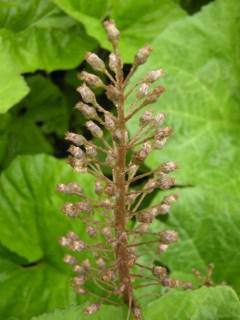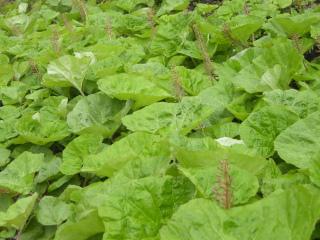
Petasites hybridus Flower Stalk (28/04/2012, London)
Position: Full sun to partial shade
Flowering period: Early spring
Soil: Moist, well drained
Eventual Height: 70cm
Eventual Spread: Indefinite
Hardiness: 5a – 9a
Family: Asteraceae
Petasites hybridus is a vigorous, spreading, herbaceous perennial. Its mid green leaves are simple, opposite, kidney shaped with undulate margins, have a wooly covering to the underside are bourne on stems which are up to 1.2m long and are up to 70cm across. This plant is dioecious, with only the male form being usually grown. Its pale pink/ white flowers appear before the leaves, they are arranged in corymbs, appear in clusters and are borne on stems which are up to 30cm tall. These are followed by a fruit in the form of an achene. Its roots are rhizomes which enables this plant to spread vigorously.
Petasites hybridus, commonly known as Common Butterbur, Bog Rhubarb and Devil’s Hat, Pestilence Wort, is native to Europe (including the UK) and Northern Asia. In its native environment it is commonly found in wet lowland wooded areas, wet meadows and pond and stream edges. Petasites hybridus is synonymous with Petasites officinalis, Petasites ovatus and Petasites vulgaris. This plant has a long history of medicinal use.

Petasites hybridus (28/04/2012, London)
The etymological root of the binomial name Petasites is derived from the Greek petasos a ‘broad brimmed hat’ or ‘sunshade’, in reference to the large leaves of some species. Hybridus is derived from the Latin hybrida ’hybrid’.
The landscape architect may find Petasites hybridus useful as an effective low growing, native ground cover plant for damp places, particularly at pond or lake edges. Caution should be taken when specifying this plant as it can be quite invasive.
Ecologically, P. hybridus is attractive to bees and pollinating insects.
P. hybridus prefers moist, fertile soils. It tolerates most pH of soil.
P. hybridus requires little maintenance.

